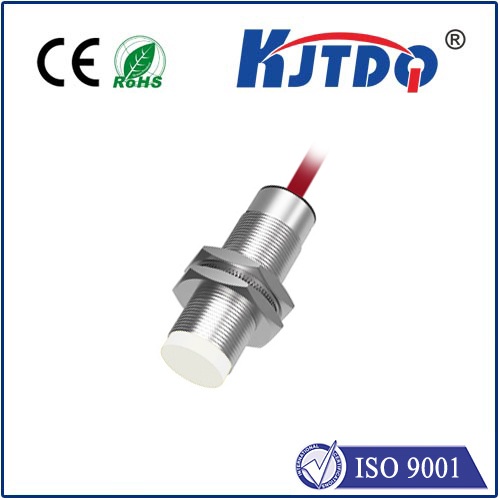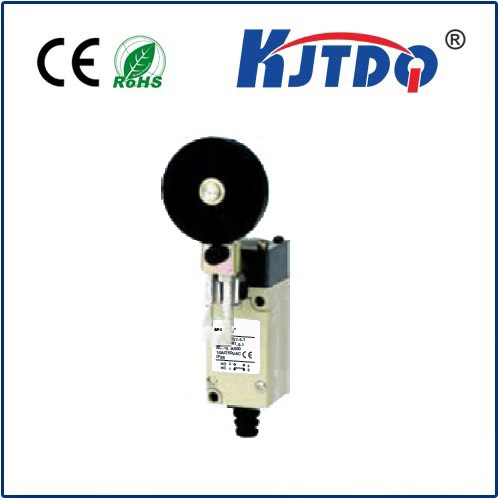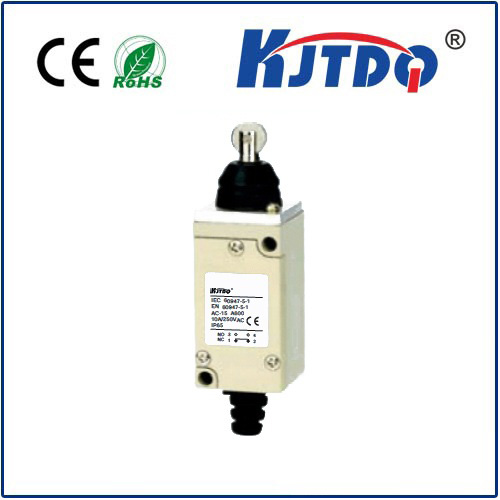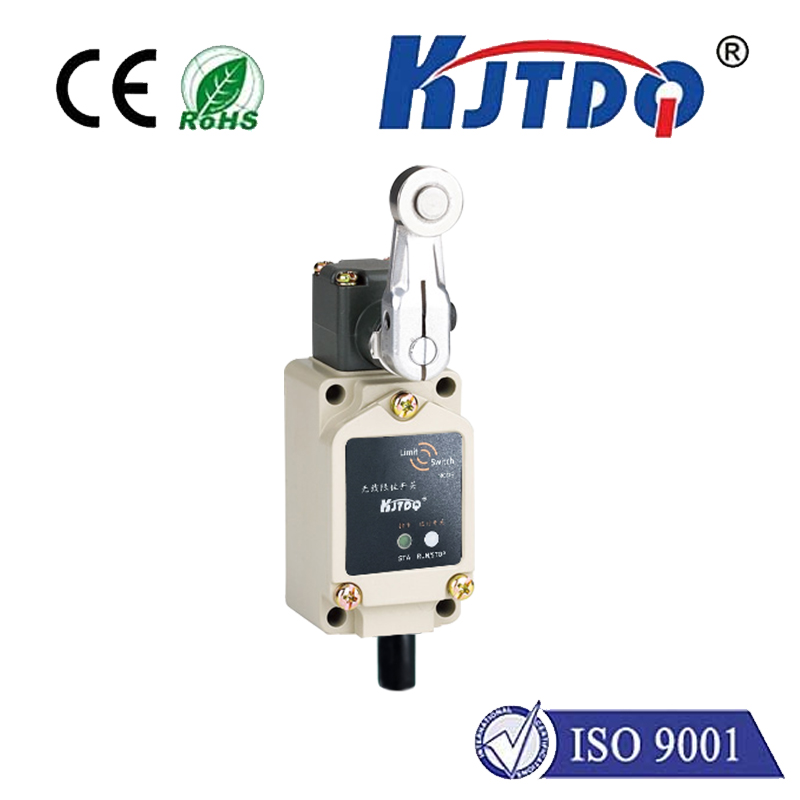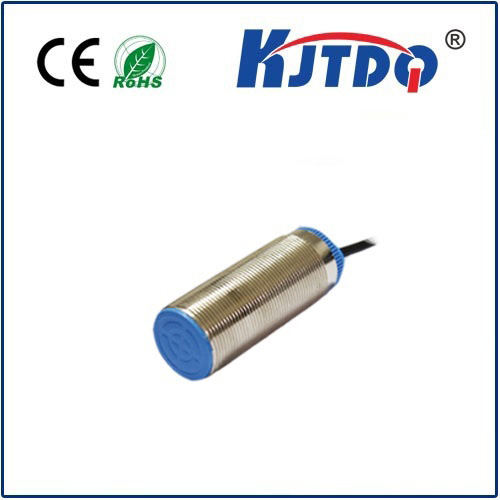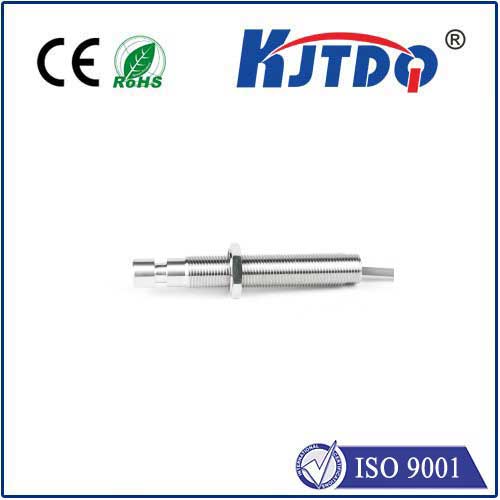proximity sensor no nc
- time:2025-06-23 17:21:15
- Click:0
Demystifying Proximity Sensor Contacts: Your Guide to NO vs NC Configurations
Ever watched a production line seamlessly stop when an operator steps too close, or a robotic arm deftly sense the presence of a component? The unsung hero behind these moments of precision automation is often the humble proximity sensor. But within these compact devices lies a critical choice that directly impacts circuit behavior: the selection between Normally Open (NO) and Normally Closed (NC) contacts. Understanding this “proximity sensor no nc” distinction isn’t just technical jargon; it’s fundamental to designing safe, reliable, and efficient systems.
At the Heart: What NO and NC Really Mean
Before diving into sensors specifically, grasp the core concept of electrical switching contacts:
- Normally Open (NO): Imagine a switch in its resting state – the circuit is open, meaning no current flows. Only when the switch is activated does the circuit close, allowing current to pass. Think of a light switch: off (open) is its default, on (closed) happens when you flip it.
- Normally Closed (NC): Conversely, this switch starts in the closed state in its resting position – current flows freely. When activated, the switch opens, breaking the circuit and stopping the current flow. An example could be a safety switch on a door: circuit closed (device running) when the door is shut; circuit opens (device stops) when the door opens.
Applying NO and NC to Proximity Sensors
Proximity sensors detect the presence or absence of an object (the “target”) without physical contact, using electromagnetic fields, light, or sound. Their electrical output mimics the behavior of the switches described above.
An NO Proximity Sensor:

Resting State (No Target Present): Its output circuit is open. No signal (current) is sent to the connected device (like a PLC input, relay, or controller).
Activated State (Target Detected): When a target enters the sensor’s detection range, it closes its output circuit. Current flows, signaling the target’s presence to the connected system. This is the most common configuration.
An NC Proximity Sensor:
Resting State (No Target Present): Its output circuit is closed. Current is flowing to the connected device, indicating “no target present” or a “ready” state.
Activated State (Target Detected): When a target is detected, the sensor opens its output circuit. Current stops flowing, signaling the target’s presence by the absence of the signal.
Why the Choice Matters: Safety, Logic, and Functionality
Selecting between NO and NC isn’t arbitrary; it’s driven by the application’s requirements, especially safety and control logic:
- Fail-Safe Design (The Critical NC Role): This is often the primary reason to choose NC. Imagine a safety guard on a machine. You want the machine to stop if the guard is opened.
- Using an NC sensor monitoring the guard: Guard closed (no target=closed circuit) = machine runs. Guard opened (target detected=circuit opens) = signal lost = machine stops. If the sensor fails, loses power, or its wiring breaks, the circuit also opens, causing the machine to stop. This is fail-safe behavior.
- Using an NO sensor: Guard closed (target detected=closed circuit) = machine runs. Guard opened (no target=open circuit) = machine stops. BUT, if the sensor fails, its output remains open – the machine won’t start, but if it was running, a sensor failure might not stop it, which is unsafe. NC provides inherent safety for critical monitoring.
- Control Logic Compatibility: Programmable Logic Controllers (PLCs) and other controllers interpret input signals based on their programming.
- An NO sensor provides an active signal (ON) upon detection. This naturally aligns with logic requiring a positive confirmation of presence (e.g., “Start conveyor when part is present”).
- An NC sensor provides an active signal (ON) when the target is NOT detected. This is perfectly suited for logic based on absence or breaks in continuity (e.g., “Stop feeding if the bin is empty” – where the sensor at the bottom detects the absence of material as its resting state).
- Energy Consumption (Minor Consideration): An NC sensor draws a small amount of current in its resting state to maintain the closed circuit. An NO sensor draws minimal current only when activated. While usually negligible for individual sensors, it can be a factor in very large installations with hundreds of sensors.
Making the Right Choice: NO or NC Proximity Sensor?
Consider these factors when specifying your sensor:
- Safety Critical? If the sensor monitors a safety interlock (guards, emergency stops, presence in hazardous zones), NC is almost always mandatory for fail-safe operation. Safety should never rely solely on an NO contact.
- Desired Logic State on Detection: Do you need an active signal when the target is present (NO) or when the target is absent (NC)? Think about how the signal will be processed by your controller. What does “true” mean for your application?
- System Behavior on Failure/Power Loss: What should happen if the sensor malfunctions, loses power, or a wire breaks? Should the controlled process stop (safer, often requires NC) or is it acceptable for it to potentially continue running (might be acceptable for non-critical NO applications)?
- Standard Practices: In many non-safety industrial applications (object detection for counting, position verification), NO is the de facto standard because an active signal signifies detection.
Key Takeaways for NO vs NC Proximity Sensors
The “proximity sensor no nc” question boils down to the fundamental state of the output contacts when the sensor is unactivated and its desired behavior upon detection and failure.
- NO (Normally Open): Output is OFF (no signal) with no target. Turns ON (signal present) when target detected. Best for: Standard presence detection, counting applications, starting processes on detection. Less inherently fail-safe.
- NC (Normally Closed): Output is ON (signal present) with no target. Turns OFF (signal lost) when target detected. Essential for: Safety interlocks, monitoring for absence/breakages, applications requiring fail-safe operation where a signal loss must trigger a safe state (like stopping a machine). Provides inherent safety on sensor/wiring failure.
Always consult sensor datasheets carefully as manufacturers clearly label the switching type (NO, NC, or sometimes selectable). Understanding the profound difference between a proximity sensor’s NO and NC configuration is crucial for implementing control systems that are not only functional but, more importantly, safe and reliable. Choosing correctly ensures your automation behaves exactly as intended, even when things go wrong.








